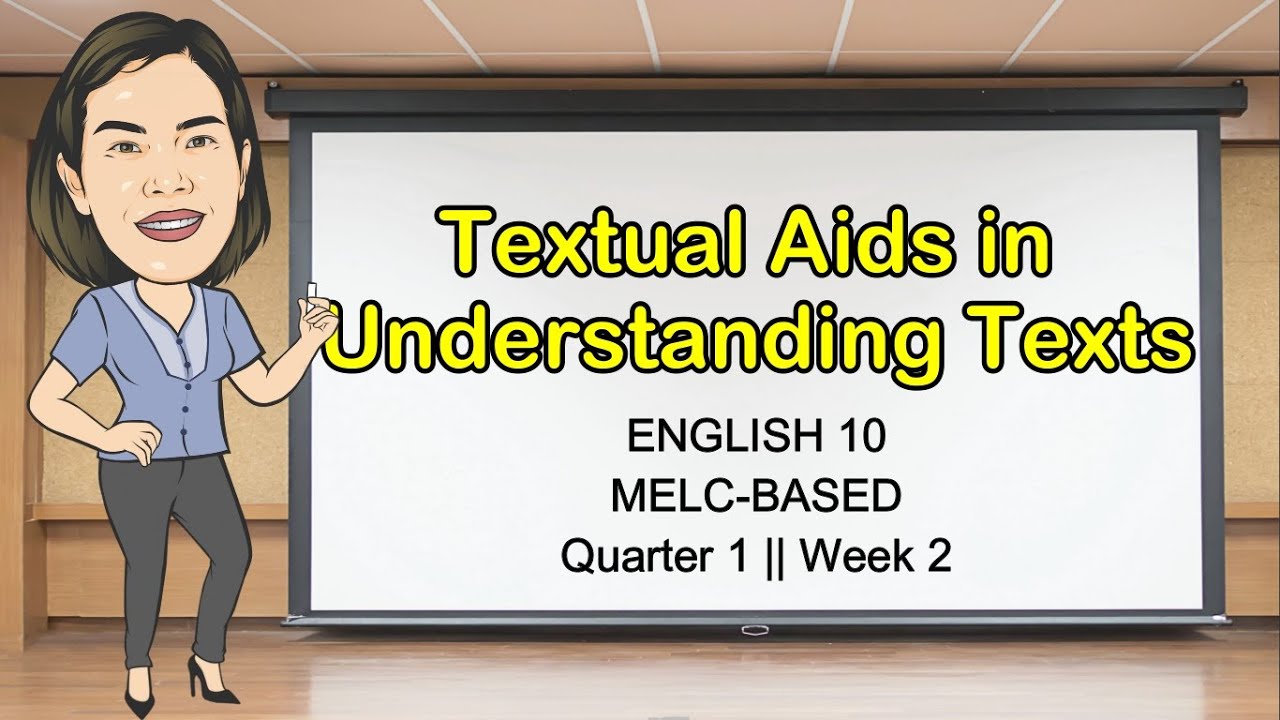Explain Visual-Verbal Relationships || GRADE 8 || MELC-based VIDEO LESSON | QUARTER 2 | MODULE 1
Summary
TLDRThis video lesson focuses on explaining visual and verbal relationships in expository texts, such as tables, charts, and maps. It defines key terms like 'visual,' 'verbal,' and 'expository text,' and emphasizes the importance of understanding how graphics aid in interpreting complex information. The teacher explains linear and non-linear texts, the role of visuals in enhancing comprehension, and provides examples of interpreting charts, diagrams, and timelines. The lesson aims to help students better grasp the use of visuals in academic texts, ultimately making reading and learning more efficient.
Takeaways
- 📚 The lesson is about explaining visual-verbal relationships in expository texts.
- 👁️ Visual refers to pictures, films, or displays used to illustrate or accompany something.
- 🗣️ Verbal means anything related to words, either spoken (oral) or written communication.
- 📖 Expository texts are non-fiction texts that provide facts and information about a topic.
- 📊 Examples of expository text structures include cause and effect, definition, sequence, and comparison.
- 📈 Visual aids, such as charts, graphs, tables, and illustrations, help readers understand complex data in expository texts.
- 📑 Linear texts must be read from start to finish (e.g., novels), while non-linear texts allow multiple reading paths (e.g., charts, graphs).
- 🖼️ Photographs and illustrations are commonly used in expository texts to provide visual representations of facts.
- 📉 Charts and graphs are efficient for organizing large amounts of data in expository texts.
- 📅 Diagrams and timelines visually present processes or sequences of events to enhance understanding.
Q & A
What is the main topic of the video lesson?
-The main topic of the video lesson is explaining visual-verbal relationships as illustrated in tables, charts, maps, and other graphics found in expository texts.
How is the term 'visual' defined in the video?
-'Visual' is defined as an adjective relating to seeing or sight. As a noun, it refers to a picture, piece of film, or display used to illustrate or accompany something.
What is meant by 'verbal' according to the lesson?
-'Verbal' refers to anything related to or in the form of words. Verbal communication can be oral or written and involves expressing thoughts using words.
What are expository texts, as described in the video?
-Expository texts are non-fiction texts that provide facts and information about a topic. They are organized based on the author's purpose or content rather than following a story structure. Examples include news articles, textbooks, and instruction manuals.
What are some common structures of expository texts mentioned in the video?
-Common structures of expository texts include cause and effect, concept and definition, sequential, compare and contrast, and proposition and support (persuasive).
What is the difference between linear and non-linear text?
-Linear text is read from beginning to end and is traditional, such as novels and textbooks. Non-linear text, on the other hand, does not follow a strict sequence and can include charts, graphs, and diagrams where readers choose their reading path.
Why are visual aids important in expository texts?
-Visual aids like charts, graphs, and maps help readers understand complex data more efficiently, make the text more engaging, and allow for quicker comprehension of information.
What are some examples of graphics that may be difficult to interpret?
-Charts and graphs may be challenging for readers to interpret because they present a lot of data in a small space. Readers must understand what data is being included to interpret them effectively.
How can readers interpret photographs and illustrations in expository texts?
-Readers should pay attention to captions and titles provided with photographs and illustrations, as these offer essential information for understanding what is being depicted.
What strategies are suggested for interpreting diagrams and timelines?
-When interpreting diagrams and timelines, readers should focus on captions and labels to understand the information being represented. These visuals often represent complex processes or the passage of time and require careful attention.
Outlines

Этот раздел доступен только подписчикам платных тарифов. Пожалуйста, перейдите на платный тариф для доступа.
Перейти на платный тарифMindmap

Этот раздел доступен только подписчикам платных тарифов. Пожалуйста, перейдите на платный тариф для доступа.
Перейти на платный тарифKeywords

Этот раздел доступен только подписчикам платных тарифов. Пожалуйста, перейдите на платный тариф для доступа.
Перейти на платный тарифHighlights

Этот раздел доступен только подписчикам платных тарифов. Пожалуйста, перейдите на платный тариф для доступа.
Перейти на платный тарифTranscripts

Этот раздел доступен только подписчикам платных тарифов. Пожалуйста, перейдите на платный тариф для доступа.
Перейти на платный тарифПосмотреть больше похожих видео

ENGLISH 8 QUARTER 2 WEEK 1 EXPLAIN VISUAL-VERBAL RELATIONSHIPS (TABLES,GRAPHS,INFORMATION MAPS)

TEXTUAL AIDS IN UNDERSTANDING TEXTS || Quarter 1 Week 2 || English 10 || MELC-BASED || Aizie Dumuk

TEXTO EXPOSITIVO: CARACTERÍSTICAS - Tipologia Textual - Aula 6 - Profa. Pamba

Teks Eksposisi Kelas 8 Semester 1

ServiceNow Table Relationships and Schema Map

KD 3.9 dan 3.10 Teks Eksplanasi (Bahasa Indonesia kelas 8 SMP)
5.0 / 5 (0 votes)
